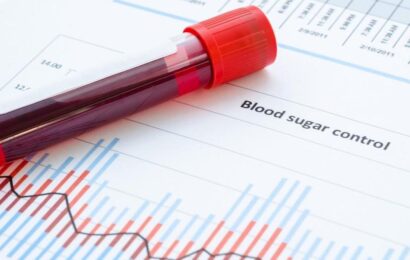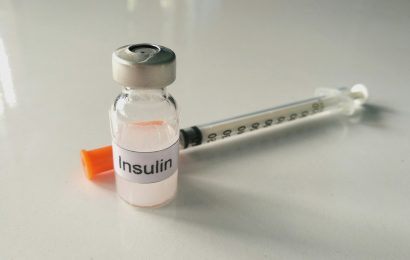March 14 is National Potato Chip Day. If any snack food deserves its own day, then it probably should be potato chips, given their popularity. Walk down any snack aisle in a grocery store and you’ll quickly see that potato chips reign. We Americans love our chips. In fact, we love them so much that we gobble down 1.2 billion pounds of them each year.
A Chip Off the Old Potato…
We can thank a man named George Crum for inventing potato chips. George was working as a chef at a resort in Saratoga Springs, New York, in 1853. As the story goes, a disgruntled diner complained that his French fries (popular since the 1700’s) were too thick and he sent them back to the kitchen. George trimmed them down a couple of times, making them super thin and essentially creating the first potato chips! The chips became known as Saratoga Chips and were a hit on the menu. After that, potato chip popularity spread throughout New England. In the 1920’s, Herman Lay started selling potato chips out of the back of his car to grocers. The rest, as they say, is history.
Potato Chip Nutrition
People always lament, “Why is it that foods that taste good are so bad for you?” Well, chips are not necessarily as “bad” as one may think, but they’re not exactly what you’d call a health food. Potato chips start out OK when they’re potatoes that are washed and peeled. Then, they are sliced by a machine to 1/20th of an inch thick. The slices are washed and dried, and then moved to the fryer (which is filled with hot oil). Once they’re cooked, the chips are lifted out of the oil, salted (most of the time), and sometimes seasoned. They’re then packaged and sent off to stores. (Speaking of seasonings, we have flavors like barbecue, cheddar, sour cream and onion, and salt and vinegar in the US. Other countries have flavors such as garlic, dill pickle, roasted chicken, wasabi, and paprika!).
The frying and the salting are where the nutritional value of potatoes goes downhill. For comparison purposes, let’s look at the nutritional value of a baked potato and a handful of chips:
Baked potato, 1 medium: 145 calories, 34 grams of carbohydrate, 2 grams of fiber, 0.2 grams of fat, 0 grams of saturated fat, 8 milligrams of sodium
Potato chips, 1 ounce: 155 calories, 14 grams of carbohydrate, 1 gram of fiber, 11 grams of fat, 3 grams of saturated fat, 149 milligrams of sodium
Interestingly, there’s not a big difference in calories between the two. The chips are obviously much higher in fat and do contain sodium (these are salted chips), although the sodium is not off the charts (a low-sodium food has no more than 140 milligrams per serving). The catch? An ounce of chips isn’t all that much. It’s a small handful, roughly 10 to 20 chips. Is that all you eat? Can you really eat just one, or ten, or twenty? Or do you keep reaching your hand in the bag?
No, potato chips aren’t all that “bad.” But, people typically don’t stick with just one serving, which is one ounce. And the chips usually replace healthier choices, such as fruits and vegetables. For example, if you’re asked if you’d like chips or some carrot sticks with your sandwich, which would you choose?
Reduced-fat and baked chips fare a little better in the calorie and fat categories, so they’re a better choice than the regular version. As with any lower-fat food, be careful with portions, though. And note that the carbohydrate goes up a little when the fat goes down.
Reduced-fat potato chips, 1 ounce: 134 calories, 19 grams of carbohydrate, 2 grams of fiber, 6 grams of fat, 1 gram of saturated fat, 139 milligrams sodium
Baked potato chips, 1 ounce: 110 calories, 23 grams of carbohydrate, 2 grams of fiber, 2 grams of fat, 0 grams of saturated fat, 150 milligrams of sodium.
Unsalted potato chips, 1 ounce: 152 calories, 15 grams of carbohydrate, 1 gram of fiber, 10 grams of fat, 3 grams of saturated fat, 2 milligrams sodium
Unsalted chips are obviously a much better choice, sodium-wise. But low-sodium doesn’t have anything to do with the fat or calorie content. By the way, if you favor salt and vinegar chips, you’ll swallow 380 milligrams of sodium per 1-ounce serving. Keep in mind that the sodium recommendations for the general public are no more than 2300 milligrams per day. If you’re a middle-aged or older adult; have high blood pressure, diabetes, or kidney disease; or are African-American, your goal is no more than 1500 milligrams of sodium per day. It’s hard to fit salty potato chips into a 1500-milligram sodium diet.
Fortunately, most brands of potato chips are free of harmful trans fats. And several brands are low in saturated fat. You could do worse with a snack food. Yet, the bottom line is that potato chips will probably never be considered a health food. It’s OK to enjoy them in moderation. But don’t let your love of chips crowd out healthier snack choices, like fruit, whole-grain crackers, or yogurt.
Make Your Own!
You might want to try your hand at making a healthier potato chip. Preheat the oven to 350˚F. Heat up a cookie sheet in the oven. Start with one baking potato per person. Scrub it well but don’t peel it. Slice it as thin as possible (a mandolin is best for this). Spread the slices on a cookie sheet sprayed with cooking spray. If desired, sprinkle lightly with some sea salt. Bake the slices for 10 minutes, then turn the chips and bake for another 10 minutes. They should be lightly brown and crisp. Remove from the cookie sheet and cool on a paper towel. Then eat! Happy Potato Chip Day!




